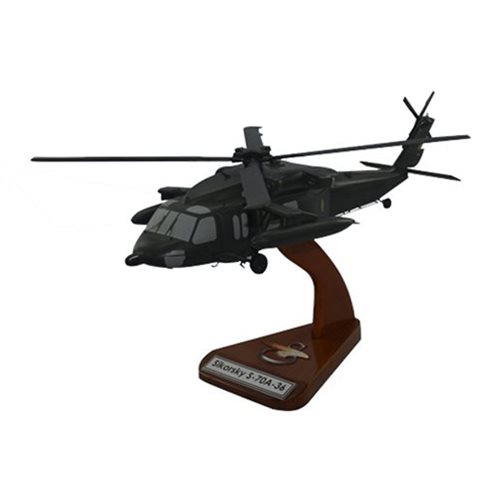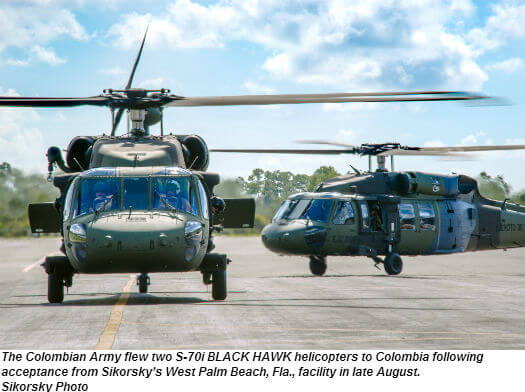The Sikorsky S 70 Helicopter: A Deep Dive into Its Style and Efficiency
The Sikorsky S 70 Helicopter: A Deep Dive into Its Style and Efficiency
Blog Article
Rotary-Wing Airplane Offering Superior Sturdiness and Precision Design
In the realm of air travel, rotary-wing aircraft have long been recognized for their one-of-a-kind capabilities in various operational environments. From armed forces goals to civilian applications, the evolution of rotary-wing technology has actually paved the means for equipments that provide exceptional resilience and accuracy engineering. Via developments in products and building and construction methods, paired with sophisticated flight control systems, these airplanes have ended up being vital devices for jobs that demand both effectiveness and precision. As we discover the detailed equilibrium in between innovation and dependability in rotary-wing aircraft, it ends up being apparent that the convergence of cutting-edge technology and proven style concepts has actually established a new requirement for efficiency and effectiveness in the aerospace market.
Evolution of Rotary-Wing Modern Technology
Throughout the background of aviation, the evolution of rotary-wing technology has been a testament to regular innovation and innovation in aeronautical design. From the early days of upright trip with fundamental designs to the advanced helicopters and other rotary-wing airplane these days, the progression in this area has actually been exceptional.
In the early 1900s, pioneers like Igor Sikorsky and Juan de la Cierva made significant strides in rotary-wing innovation. Sikorsky's VS-300 helicopter, initial flown in 1939, marked a pivotal moment in the growth of practical rotary-wing aircraft. This success led the way for more improvements in upright trip abilities.

Today, rotary-wing aircraft play critical functions in numerous markets, including army procedures, emergency medical services, legislation enforcement, and commercial transport. The development of rotary-wing modern technology remains to press the borders of what is feasible in vertical flight, making certain that these aircraft remain indispensable assets in the air travel sector.
Materials and Building And Construction Innovations
Demonstrating a fusion of sophisticated products and precise building and construction methods, rotary-wing airplane have actually undergone considerable innovations in durability and efficiency. Among the key innovations in materials utilized for rotary-wing airplane is the raising use of composite products. These products, such as carbon fiber enhanced polymers, offer a high strength-to-weight proportion, enhancing both the structural honesty and total efficiency of the aircraft. Furthermore, innovations in making processes have enabled even more precise and intricate construction of rotary-wing components, adding to improved aerodynamics and performance.
In addition, the combination of advanced coatings and surface area treatments has actually played an essential function in improving the longevity of rotary-wing airplane. These layers give protection versus corrosion, abrasion, and severe weather condition problems, expanding the life expectancy of the airplane and lowering maintenance demands.
In regards to construction developments, additive manufacturing, additionally referred to as 3D printing, has actually changed the production of facility components for rotary-wing airplane. This modern technology enables fast prototyping and personalization, bring about much faster development cycles and decreased expenses. Generally, the continuous advancement of products and building and construction strategies is driving the capacities and efficiency of rotary-wing airplane to new heights.
Accuracy Flight Control Solution

The assimilation of GPS technology even more boosts the accuracy and reliability of these systems, permitting accurate navigation, waypoint monitoring, and automated flight control. sikorsky s 70. This level of accuracy not only enhances the safety of rotary-wing procedures but likewise boosts general functional efficiency and goal effectiveness
Moreover, the constant advancements in fabricated intelligence and device learning have promoted the development of autonomous flight abilities within Accuracy Trip Control Systems. This allows rotary-wing aircraft to do intricate missions with unrivaled accuracy and consistency, making them crucial properties in a variety of applications, including army operations, search and rescue objectives, and airborne photography.
Sturdiness in Testing Atmospheres
In demanding functional setups, rotary-wing aircraft demonstrate extraordinary strength and robustness, guaranteeing optimum efficiency under difficult ecological problems. These aircraft are designed to stand up to a wide array of environmental factors, consisting of extreme temperatures, high winds, and harsh terrain, making them appropriate for various objectives in diverse landscapes.
One essential element adding to the sturdiness of rotary-wing airplane is their rugged building and construction. These airplanes are constructed using high-grade materials and progressed engineering strategies to improve their architectural integrity and dependability. Furthermore, components such as rotor blades, engine systems, and landing gear are carefully developed to hold up against the stresses and strains run into throughout procedures in tough environments.
In addition, rotary-wing aircraft are furnished with advanced onboard systems that monitor performance metrics in real-time, permitting proactive maintenance and very early discovery of prospective concerns - sikorsky s 70. This positive technique helps avoid unexpected failings and makes sure the ongoing airworthiness of the airplane sought after operational settings. In general, the longevity of rotary-wing airplane in tough settings is a testimony to their remarkable design and style, making them essential assets for numerous mission-critical procedures
Maintenance and Dependability Requirements
The adherence to stringent maintenance and integrity standards is vital in making sure the ideal performance and safety and security of rotary-wing aircraft. find out here Normal upkeep checks, carried out by certified specialists, are necessary to identify and address any type of possible issues prior to they endanger the airplane's performance. These checks incorporate a thorough examination of all vital components, consisting of the engine, blades system, avionics, and hydraulic systems, to guarantee that they are in prime working condition.
Additionally, adherence to set up upkeep intervals according to maker guidelines is important for maintaining the aircraft's dependability. This proactive method helps avoid unforeseen failures and ensures that the aircraft continues to be airworthy for its desired goals. Additionally, the execution of robust integrity criteria, such as routine element screening and replacement based on predetermined lifecycles, further enhances the aircraft's dependability.
Final Thought

To conclude, the innovations in rotary-wing aircraft modern technology have resulted in remarkable durability and precision engineering. With innovative products and building strategies, along with precision flight control systems, these aircraft can operate in tough atmospheres with boosted reliability. The maintenance and reliability requirements make certain that these rotary-wing aircraft continue to execute at their best, making them essential possessions for various markets.
Showing a blend of cutting-edge materials and specific building methods, rotary-wing aircraft have undergone considerable improvements in resilience and efficiency. One of the essential innovations in products made use of for rotary-wing aircraft is the boosting utilization of composite materials.With precise attention to information and progressed technical integration, rotary-wing aircraft have actually embraced Precision Flight Control Equipment as a keystone of their operational quality. In general, the sturdiness of rotary-wing aircraft in visit our website difficult environments is a testament to their remarkable engineering and style, making them crucial assets for view website various mission-critical procedures.
In conclusion, the improvements in rotary-wing aircraft modern technology have led to superior resilience and accuracy design.
Report this page